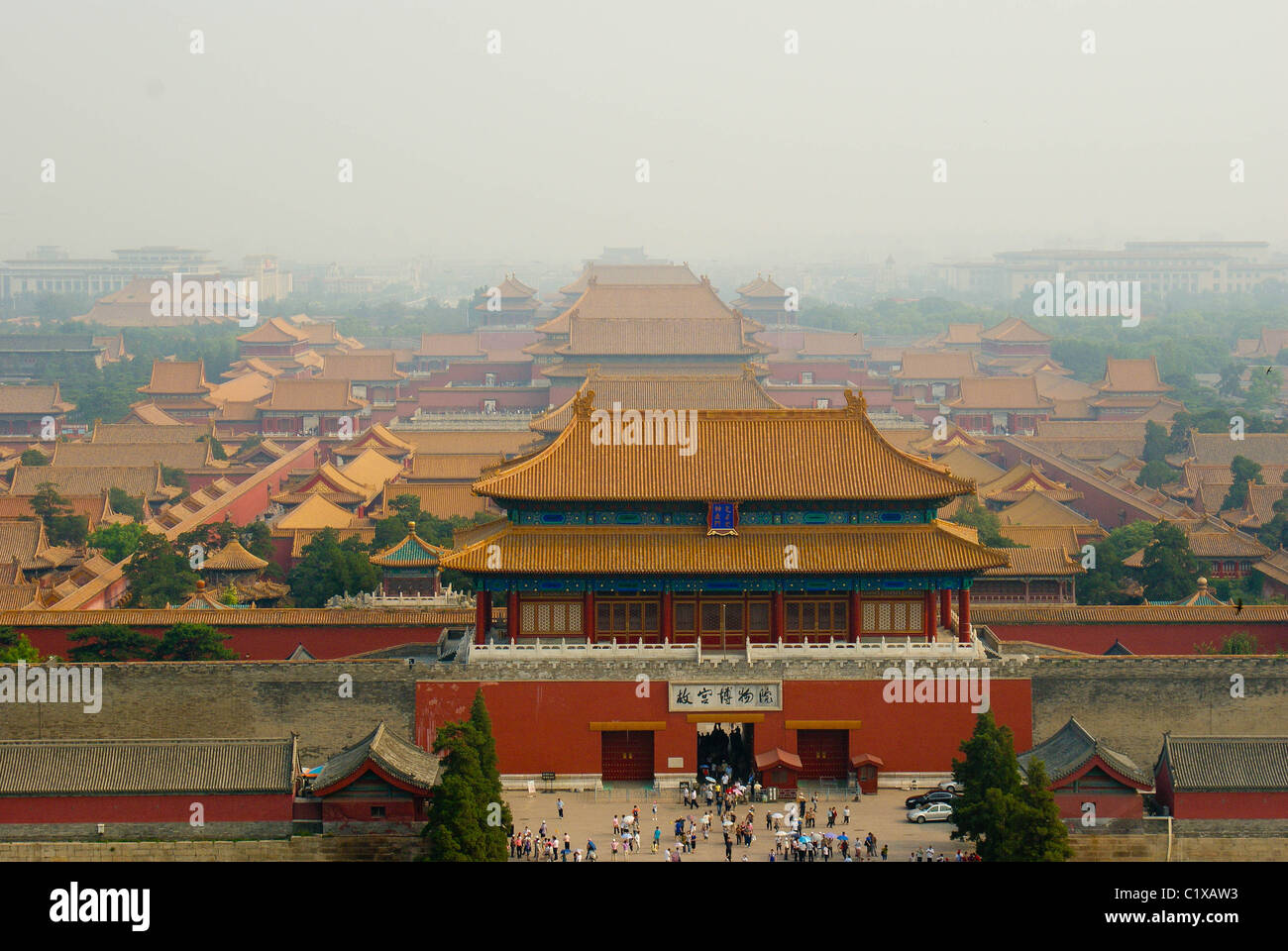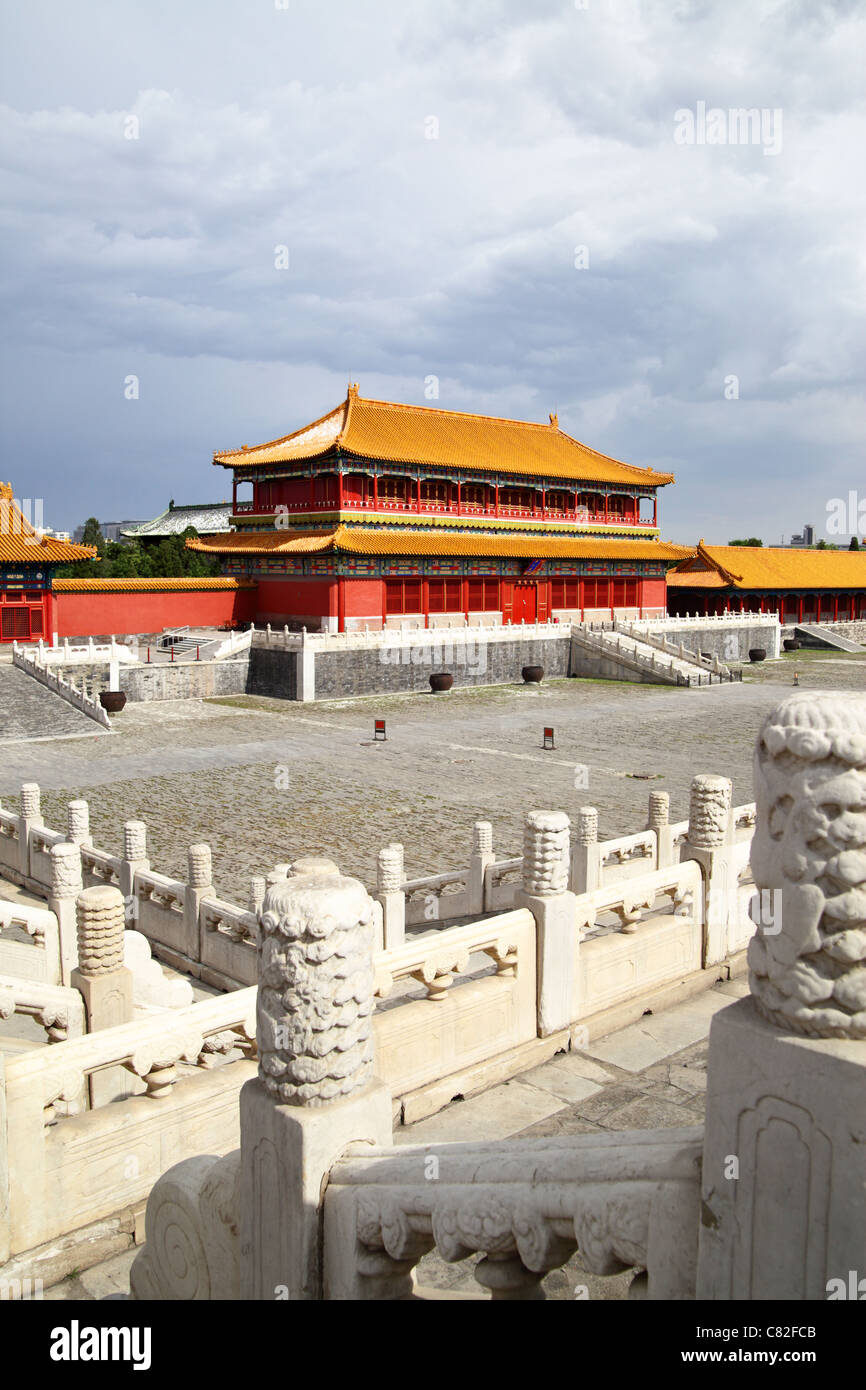
Imperial Palace Forbidden City Gu Gong Stock Photo 104975414 Shutterstock
Beijing Forbidden City As the seat of power for hundreds of years, Beijing is full of examples of imperial extravagance and architectural design. In no place are these on better display than the Forbidden City, also known as the Palace Museum or gu gong in Chinese.

Forbidden City Gugong Beijing China Stock Photo 27157876 Shutterstock
Person as author : Guo Changhong In : Museum international, LX(60), 1-2 / 237-238, p. 78-88, illus. Language : English Also available in : Français Also available in : 汉语 Year of publication : 2008. article

The FORBIDDEN CITY (Gu Gong), Chang'an Dajie, Beijing, Chi… Flickr
Get everything you want in a hotel: low rates, great reviews, perfect location & more. Find Guangdong China · Search for the lowest prices on Tripadvisor®.

GuGong (Forbidden City) In Beijing, China Stock Photo Image of beautiful, blue 79460762
Falun Gong (UK: / ˌ f ɑː l ʊ n ˈ ɡ ɒ ŋ, ˌ f æ l-,-ˈ ɡ ʊ ŋ /, US: /-ˈ ɡ ɔː ŋ /) or Falun Dafa (/ ˈ d ɑː f ə /; lit. 'Dharma Wheel Practice') is a new religious movement. Falun Gong was founded by its leader Li Hongzhi in China in the early 1990s. Falun Gong has its global headquarters in Dragon Springs, a 427-acre (1.73 km 2) compound in Deerpark, New York, United States.

Mao Tse Tung Tiananmen Gate Gugong Forbidden City Palace Beijing China Stock Editorial Photo
Chinese name: 故宫 Gùgōng /goo-gong/ 'Formers Palace' 1. The Forbidden City is the world's largest imperial palace. The Forbidden City The Forbidden City occupies 720,000 sq m (7,750,000 sq ft), over three times larger than the Louvre Palace in France. An estimated 1 million laborers worked to complete the structure.

Forbidden City or Gugong, Beijing, China — Stock Photo © GekkoGallary 160974460
Starting with the settling of the Mongol Kublai's who invaded from the North and devasted the original city of Beijing, then named Zhong Du, and through the subsequent Yuan Dynasty (1206 AD - 1368 AD), Beijing has been the Capital City of China, with only brief intersessions, since the Year 1280 AD.The first break was made during the first three Reign Periods of the Ming Dynasty, who moved the.

The Forbidden City (Gu Gong), Beijing, China Stock Photo Alamy
The Forbidden City in Beijing is one of the largest and most well-preserved wooden structures in the world. It was listed as the first batch of national key cultural relics in 1961. [9] Etymology The common English name "Forbidden City" is a translation of the Chinese name Zijin Cheng ( Chinese: 紫 禁 城; pinyin: Zǐjìnchéng; lit.

Beijing Gu Gong (Verbotene Stadt / Kaiserpalast) City, Miles to go, Travel
Low prices on millions of books. Free UK delivery on eligible orders. Huge selection of books in all genres. Free UK delivery on eligible orders

The Forbidden City (Gu Gong) Stock Photo Image of forbidden, history 21606370
Shenyang Palace Museum is one of the only two imperial buildings in China, also known as the Shengjing Palace, which was the imperial palace in the early Qing Dynasty, Nearly 400 years ago, before the Qing Dynasty entered the customs, its imperial palace was located in Shenyang. After the move to Beijing, the palace was called the Palace of.

GuGong (Forbidden City) In Beijing, China Editorial Photography Image of construction
Gugong (Chinese: 故宫; pinyin: Gùgōng) is the Chinese name for the Forbidden City in Beijing . "Former palace" Gugong literally means "former palace", and can also refer to: Mukden Palace in Shenyang, also known as "the Shenyang Gugong" National Palace Museum in Taipei, also known as "the Taipei Gugong"

Beijing Forbidden City Gugong HighRes Stock Photo Getty Images
Forbidden City: Things to do in Beijing, China. Locals call the Forbidden City Gu Gong (故宫), which literally translates as 'former palace'. Considering the Chinese penchant for highly descriptive names, 'former palace' is a decidedly unimaginative moniker for what many consider the most marvelous of all China's ancient buildings.

Laeacco Gugong Museum Palace Sky City Photography Backgrounds Vinyl Digital Customized
Representing the best preserved imperial palace in China, Gu Gong is the largest ancient palatial structure in the world. Gu Gong expands across about 70 hectares with a total floor space of 155, 000 square meters. It contains nearly 100 palaces and courtyards, 1000 buildings and almost 9,000 rooms. Gu Gong is a symbol of the supreme power of.

Gu gong hires stock photography and images Alamy
Chinese Names: 故宫 gù gōng / 紫禁城 zǐ jìn chéng English Names: Forbidden City / Palace Museum Location: very center Beijing, China Area: 72 hectares Construction Time: 1406 to 1420, Ming Dynasty Initiator: Emperor Chengzu of the Ming Dynasty Designer: Kuai Xiang

GuGong (Forbidden City) In Beijing, China Stock Image Image of building, gate 79465261
Chinese Pinyin: Gu Gong Bo Wu Yuan /Zi Jin Cheng English Name: Palace Museum /Forbidden City Location: in the center of Beijing Previous Residents: 14 emperors from the Ming Dynasty (1368 - 1644), 10 emperors from the Qing Dynasty (1644 -1911), and their royal families. Initiator: Emperor Chengzu of the Ming Dynasty Designer: Kuai Xiang

GuGong (Forbidden City) In Beijing, China Stock Image Image of china, famous 79467753
Features of the Forbidden City Representing the world's largest complex still preserved from human activity, the Forbidden City is a jewel of China's history and culture, representing the Emperor's supreme power given from the Heaven.

Tai He Dian,The Forbidden City (Gu Gong) Editorial Stock Photo Image 21195633
The Forbidden City (Gu Gong) The Forbidden City, also known as the Imperial Palace or Palace Museum (or Gu Gong in Chinese pronunciation), is located in the center of Beijing. Built between 1406 and 1420, it was the imperial residence of 24 emperors of the Ming and Qing (1368-1911) dynasties.